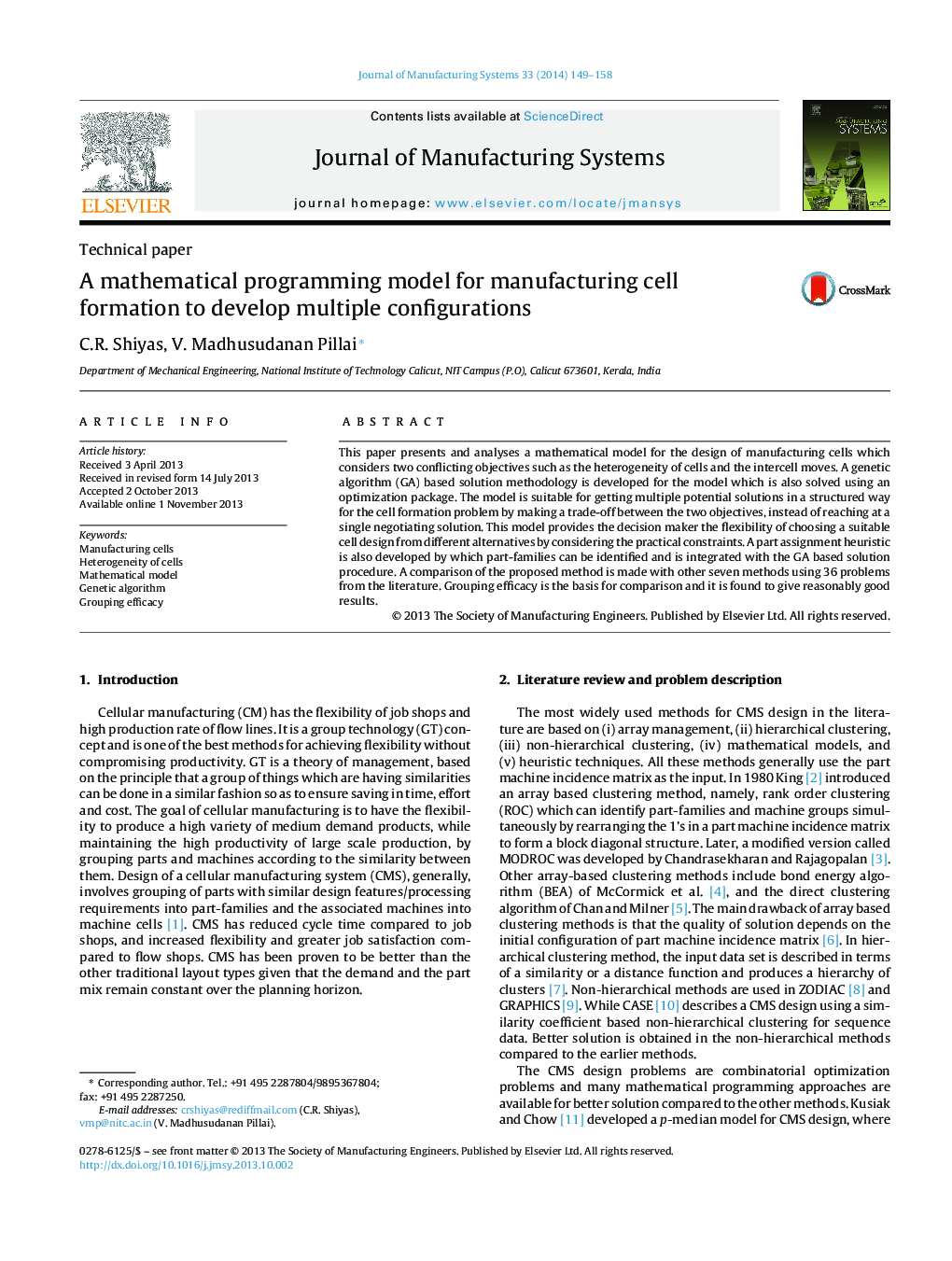| Article ID | Journal | Published Year | Pages | File Type |
|---|---|---|---|---|
| 1697634 | Journal of Manufacturing Systems | 2014 | 10 Pages |
•Proposes a mathematical model for manufacturing cell design suitable for getting multiple configurations.•A new parameter called heterogeneity is used in the design as one of the objective along with intercell moves.•A procedure is proposed for solving the model using genetic algorithm and is integrated with a part assignment rule.•The model provides flexibility for the designer to chose from many alternatives based on diverse considerations.•The performance of the model is better than other models of the literature, based on the grouping efficacy.
This paper presents and analyses a mathematical model for the design of manufacturing cells which considers two conflicting objectives such as the heterogeneity of cells and the intercell moves. A genetic algorithm (GA) based solution methodology is developed for the model which is also solved using an optimization package. The model is suitable for getting multiple potential solutions in a structured way for the cell formation problem by making a trade-off between the two objectives, instead of reaching at a single negotiating solution. This model provides the decision maker the flexibility of choosing a suitable cell design from different alternatives by considering the practical constraints. A part assignment heuristic is also developed by which part-families can be identified and is integrated with the GA based solution procedure. A comparison of the proposed method is made with other seven methods using 36 problems from the literature. Grouping efficacy is the basis for comparison and it is found to give reasonably good results.
